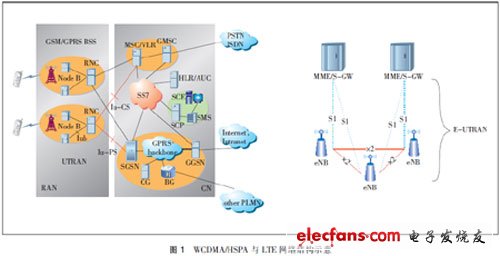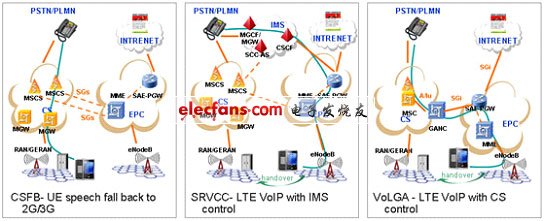Highlights of LTE's key technologies and solutions
Electronic enthusiasts : In the rapid development of mobile communications, LTE (long term evoluTIon) has attracted much attention as the mainstream standard for 3G to 4G evolution. In this time node of the old and new, the editors of the electronic enthusiast network summarized the development of key technologies of LTE, and made detailed summaries on various aspects including HSPA, LTE voice, LTE-Advanced and TDD test schemes.
HSPA+ compatibility with LTE technologyHSPA+ networks have been deployed on a large scale around the world. The deployment of LTE networks is also beginning to emerge, and its development momentum has a tendency to come to the fore. As of January 2011, there are 17 official commercial LTE networks in 15 countries and regions, 52 pre-commercial LTE trial networks, and 128 LTE commercial commitments in 52 countries. It is expected that there will be at least 64 commercial LTE networks worldwide by 2012. Currently, 26 vendors can provide 47 LTE commercial terminals, including 4 mobile phones. HSPA+ and LTE have a lot of similarities and differences in many key technologies. This paper compares the similarities and differences between these key technologies. Details

LTE voice transition technology from CS domain to VOIP domain
With the rapid development of personal voice services, wireless data networks have also moved from GPRS/HSPA to LTE. LTE will give us a high-bandwidth wireless access network to better support a variety of mobile applications, but it also hides the crisis, the biggest crisis comes from VOIP. LTE's IMS-based all-IP architecture enables packet-domain-based voice and multimedia service development. IMS adopts the SIP protocol as the unified session control protocol for different packet access networks, thus becoming the industry-recognized platform for next-generation voice/multimedia service control and network convergence. The emergence and gradual maturity of LTE technology has made commercial deployment of VoIP services for mobile network E2E possible. The high bandwidth, high mobility, and low latency of the LTE technology ensure that the user's call service experience on the LTE network can be the same as that of the conventional CS. The implementation of LTE VoIP marks an important step for the mobile network to the All-IP network. The PS domain will eventually replace the mobile CS domain and become a true All-IP network. Currently, there are three implementation architectures for LTE voice services in the industry, as shown in the following figure. Details  

Ultrasonic Annunciator,Ultrasonic Piezo Annunciator,Outdoor Ultrasonic Annunciator,Ultrasonic Piezoelectric Annunciator
NINGBO SANCO ELECTRONICS CO., LTD. , https://www.sancobuzzer.com
